 | TODAY IN SCIENCE HISTORY
NEWSLETTER - 28 DECEMBER |
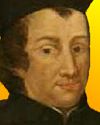 On 28 Dec 1663, Francesco Maria Grimaldi died. He was an Italian physicist and mathematician who studied the diffraction of light, for which he coined the name, and provided evidence for later physicists to support the wave theory of light. More background can be found in this short biography article on Francesco Maria Grimaldi from Penny Cyclopædia (1845). On 28 Dec 1663, Francesco Maria Grimaldi died. He was an Italian physicist and mathematician who studied the diffraction of light, for which he coined the name, and provided evidence for later physicists to support the wave theory of light. More background can be found in this short biography article on Francesco Maria Grimaldi from Penny Cyclopædia (1845). |
 On 28 Dec 1903, John von Neumann was born, a Hungarian-American mathematician who made important contributions in quantum physics, logic, meteorology, and computer science. He invented game theory in mathematics and participated in the development of the hydrogen bomb. He also set quantum theory upon a rigorous mathematical basis. In computer theory, von Neumann did much and varied pioneering work in logical design. That all means, he is an intriguing subject for a biography, deserves being referred to an the greatest scientist following Einstein. Today's Science Store pick is: John Von Neumann: The Scientific Genius Who Pioneered the Modern Computer, Game Theory, Nuclear Deterrence, and Much More, by Norman MacRae It is available New from $27.99. Used from $25.16. (As of time of writing.). On 28 Dec 1903, John von Neumann was born, a Hungarian-American mathematician who made important contributions in quantum physics, logic, meteorology, and computer science. He invented game theory in mathematics and participated in the development of the hydrogen bomb. He also set quantum theory upon a rigorous mathematical basis. In computer theory, von Neumann did much and varied pioneering work in logical design. That all means, he is an intriguing subject for a biography, deserves being referred to an the greatest scientist following Einstein. Today's Science Store pick is: John Von Neumann: The Scientific Genius Who Pioneered the Modern Computer, Game Theory, Nuclear Deterrence, and Much More, by Norman MacRae It is available New from $27.99. Used from $25.16. (As of time of writing.). | | For picks from earlier newsletters, see the Today in Science History Science Store home page. | |
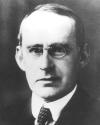 | If someone points out to you that your pet theory of the universe is in disagreement with Maxwell's equations�then so much the worse for Maxwell's equations. If it is found to be contradicted by observation�well these experimentalists do bungle things sometimes. But if your theory is found to be against the second law of thermodynamics I can give you no hope; there is nothing for it but to collapse in deepest humiliation. - Sir Arthur Stanley Eddington, English astronomer, physicist and mathematician (born 28 Dec 1882).  |
 | The electron, as it leaves the atom, crystallises out of Schrödinger's mist like a genie emerging from his bottle. - Sir Arthur Stanley Eddington, English astronomer, physicist and mathematician (born 28 Dec 1882).  |
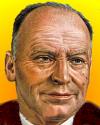 | Perhaps I occasionally sought to give, or inadvertently gave, to the student a sense of battle on the intellectual battlefield. If all you do is to give them a faultless and complete and uninhabited architectural masterpiece, then you do not help them to become builders of their own. - Carl-Gustaf Rossby, Swedish-American meteorologist (born 28 Dec 1898).  |
| Before you look at today's web page, see if you can answer some of these questions about the events that happened on this day. Some of the names are very familiar. Others will likely stump you. Tickle your curiosity with these questions, then check your answers on today's web page. |
 | Kary B. Mullis, born 28 Dec 1944, is an American biochemist, cowinner of the 1993 Nobel Prize for Chemistry for his invention of the polymerase chain reaction (PCR), with which billions of molecular copies can be made in a few hours.
 Of what does the PCR make copies? |
 | Sir Arthur Stanley Eddington, born 28 Dec 1882, was an English astronomer, physicist, and mathematician who did his greatest work in astrophysics, investigating the motion, internal structure, and evolution of stars. However, he made an important confirmation of one of the predictions of Einstein's general theory of relativity as an outcome of the 1919 solar eclipse expeditions which he led.
 What prediction did Eddington confirm? |
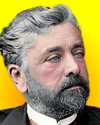 | A French civil engineer (1832-1923) specialized in metal structures, building a number of iron bridges. He was one of the first engineers to employ compressed-air caissons in bridge building. He designed the movable dome of the observatory at Nice and the framework for the Statue of Liberty in New York Harbor.
 Which is his most famous metal structure that bears his name? |
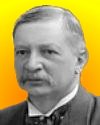 | Johannes Robert Rydberg (1919-1854) was a Swedish physicist, known for the Rydberg constant.
 With what was Rydberg working for which he introduced his constant in an empirical formula? |
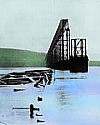 | On 28 Dec 1879, in Britain, the collapse of the central navigation spans of the Tay Railway Bridge, then longest bridge in the world, is one of the world�s most famous bridge failures, and to date it is still the worst structural engineering failure in the British Isles. The collapse took place during a gale, while a train was crossing the bridge. The train, 6 carriages and 75 lives were lost.
 Where was the bridge located? |
| On 28 Dec 1931, Ir�ne Joliot-Curie reported her study of the unusually penetrating radiation released when beryllium was bombarded by certain particles. The radiation was different from gamma rays because it released protons when passed through paraffin. Shortly, afterwards James Chadwick identified neutrons in his own experiment.
 Bombarding beryllium with which particles would produce only carbon nuclei and neutrons? |
When you have your answers ready to all the questions above, you'll find all the information to check them, and more, on the December 28 web page of Today in Science History. Or, try this link first for just the brief answers.
Fast answers for the previous newsletter for December 27: diphtheria, cholera, yellow fever, plague, rabies, anthrax, and tuberculosis • Johannes Kepler • aluminium • glass-bottle manufacturing • H.M.S. Beagle • conservation of parity. |
 If you enjoy this newsletter, the website, or wish to offer encouragement or ideas, please send feedback by using your mail reader Reply button. If you enjoy this newsletter, the website, or wish to offer encouragement or ideas, please send feedback by using your mail reader Reply button.
Your click on a StumbleUpon, Google+ or Facebook social button on the site webpages is also a welcome sign of appreciation. Thank you for using them. |
To find citations for quotations go to the corresponding webpage by clicking on the “quotes” balloon icon. Sources for the thumbnails appear on today's webpage with the corresponding item.
� This newsletter is copyright 2013 by todayinsci.com. Please respect the Webmaster's wishes and do not put copies online of the Newsletter � or any Today in Science History webpage. (If you already have done so, please remove them. Thank you.) Offline use in education is encouraged such as a printout on a bulletin board, or projected for classroom viewing. Online, descriptive links to our pages are welcomed, as these will provide a reader with the most recent revisions, additions and/or corrections of a webpage. For any other copyright questions, please contact the Webmaster by using your mail reader Reply button. |
--
If you do not want to receive any more newsletters,
Unsubscribe To update your preferences and to unsubscribe visit
this link 


 On 28 Dec 1663, Francesco Maria Grimaldi died. He was an Italian physicist and mathematician who studied the diffraction of light, for which he coined the name, and provided evidence for later physicists to support the wave theory of light. More background can be found in this short biography article on Francesco Maria Grimaldi from Penny Cyclopædia (1845).
On 28 Dec 1663, Francesco Maria Grimaldi died. He was an Italian physicist and mathematician who studied the diffraction of light, for which he coined the name, and provided evidence for later physicists to support the wave theory of light. More background can be found in this short biography article on Francesco Maria Grimaldi from Penny Cyclopædia (1845). 



 Of what does the PCR make copies?
Of what does the PCR make copies? 
 What prediction did Eddington confirm?
What prediction did Eddington confirm? 
 Which is his most famous metal structure that bears his name?
Which is his most famous metal structure that bears his name? 
 With what was Rydberg working for which he introduced his constant in an empirical formula?
With what was Rydberg working for which he introduced his constant in an empirical formula? 
 Where was the bridge located?
Where was the bridge located?  Bombarding beryllium with which particles would produce only carbon nuclei and neutrons?
Bombarding beryllium with which particles would produce only carbon nuclei and neutrons?  If you enjoy this newsletter, the website, or wish to offer encouragement or ideas, please send feedback by using your mail reader Reply button.
If you enjoy this newsletter, the website, or wish to offer encouragement or ideas, please send feedback by using your mail reader Reply button. 

Δεν υπάρχουν σχόλια:
Δημοσίευση σχολίου